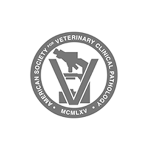Understanding Fungal Infections Affecting Your Pet


If your pet has recently been diagnosed with blastomycosis,
it’s essential to follow the direction of the veterinarian caring for your pet.
Blastomycosis is not contagious in other animals or humans. The infection can be treated
with antifungal medication, improving outcomes if the disease is detected early.
How Do Animals Contract Blastomycosis?
When dogs explore outside, they might investigate a decomposing pile of leaves, an old pile of wood near a barn or burn pit, or a patch of moist soil. They may play near a river, stream, pond, or lake and find themselves curious, sniffing around an unsafe area. When they do, they risk inhaling fungal spores that later turn into yeast once they begin to live at average body temperatures inside the lungs.
While an animal’s natural immune system can eliminate this yeast, blastomycosis can spread through the bloodstream and the pet’s lymphatic system or stay localized in the lungs.
How Is Blastomycosis Treated?
If the disease spreads, it can infect any organ in the body. The most commonly affected organs are the lungs, eyes, skin, bones and joints, and lymph nodes. Antifungal medications are often prescribed to treat blastomycosis after a positive antigen test and a veterinarian diagnosis.
Few animals exposed to Blastomyces contract blastomycosis, but it can be life-threatening if a pet does become ill. Treatments may include itraconazole, amphotericin B, low-dose corticosteroids, and supplemental oxygen, depending on the disease’s severity. Veterinarians may also combine some antifungal medications with terbinafine if conditions worsen.
Medication may be given orally, at home, or intravenously at your veterinarian’s office. Your veterinarian might also recommend other treatments depending on the severity of your pet’s illness. It’s crucial to follow the directions and dosage schedule outlined by your veterinarian.
Blastomycosis Treatment Timeline and Veterinary Monitoring
It’s important to know that your pet’s condition may seem to worsen after the first few weeks of treatment. These episodes are natural and occur with many animals. Outcomes improve when owners follow their veterinarian’s prescribed dosage schedule, as the treatment duration is typically scheduled across at least six months. After the first month, conditions should show improvement, with even better results at two months of treatment.
After at least six months, a veterinarian may stop treatment if clinical findings are resolved, imaging abnormalities are resolved, or antigen levels in the pet’s urine are negative. If this is not the case, treatment can continue for three more months to re-evaluate.
Understanding Potential Blastomycosis Relapses
Following treatment, your veterinarian will likely want to continue monitoring your pet due to potential relapse. If blastomycosis reappears (positive antigen test), the treatment cycle can start again with variances per your veterinarian’s guidance.
Blastomycosis is difficult to clear completely. In a minority of animals (20%), relapses may occur. Your veterinarian may want to perform the same physical examinations and lab work they performed at first. It’s highly recommended that you pay close attention to the health of your pets affected by blastomycosis during and after treatment, as early detection of relapses can lead to better outcomes.









